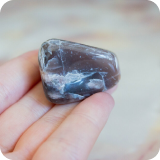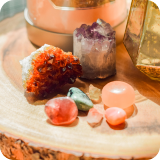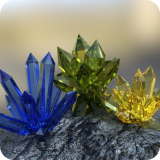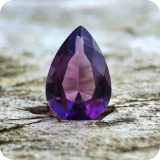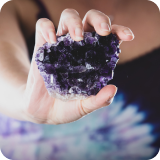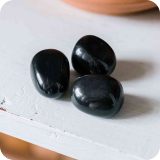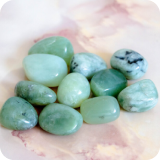- Where To Find Geodes?
- How To Identify Unopened Geodes? 5 Easy Tests
- How To Open a Geode? 6 Tried and Tested Ways!
- Tips for Opening Geodes
- Metaphysical Properties and Benefits of Geodes
- FAQ on Identifying Crystal Geodes
- Start Identifying Geodes Easily!
Did you know geode comes from the Greek word Geoides, meaning Earth-like? Geodes are intriguing to geologists, collectors, shamans, psychics, and healers because of their surprising crystal coating. So, what are geodes? How do they look? What are their benefits? How do they form?
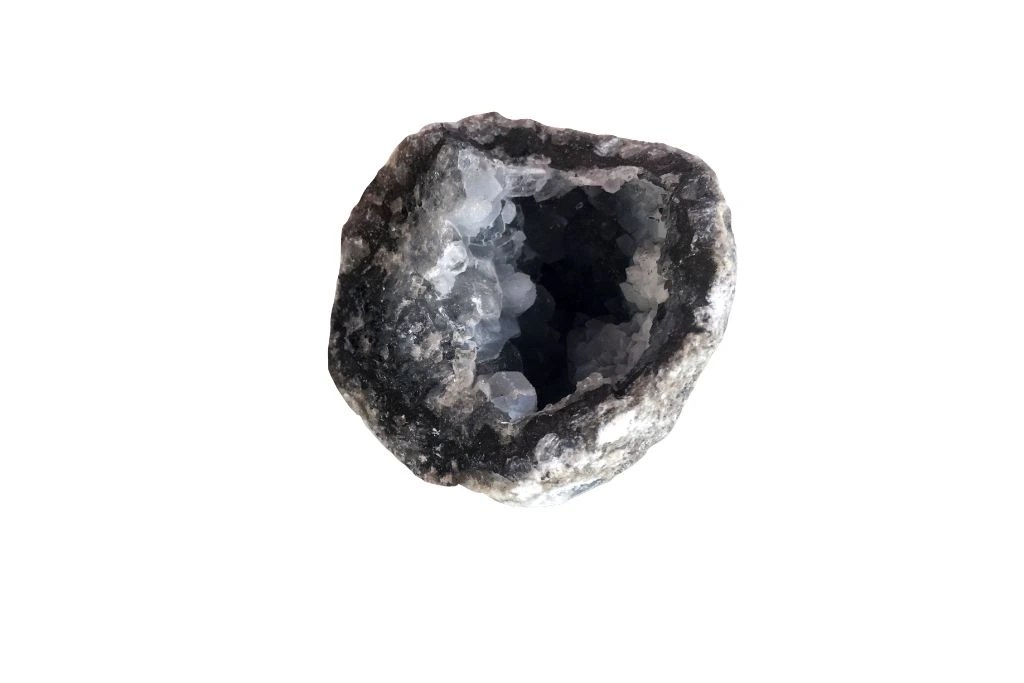
Geodes are spheric crystals from the Agate family with hollow cavities lined with druzy crystals from minerals or even Dinosaur eggs. Geodes purify and amplify energies and form via air pockets. Geode exteriors look ordinary, but interiors are often filled with colorful druzy crystals.
Today we’ll unravel the mysteries and magic of geode rocks, so you know where to find them, what they look like, and how to open or use them for metaphysical benefits.
Ready? Let’s dive in!
Where To Find Geodes?
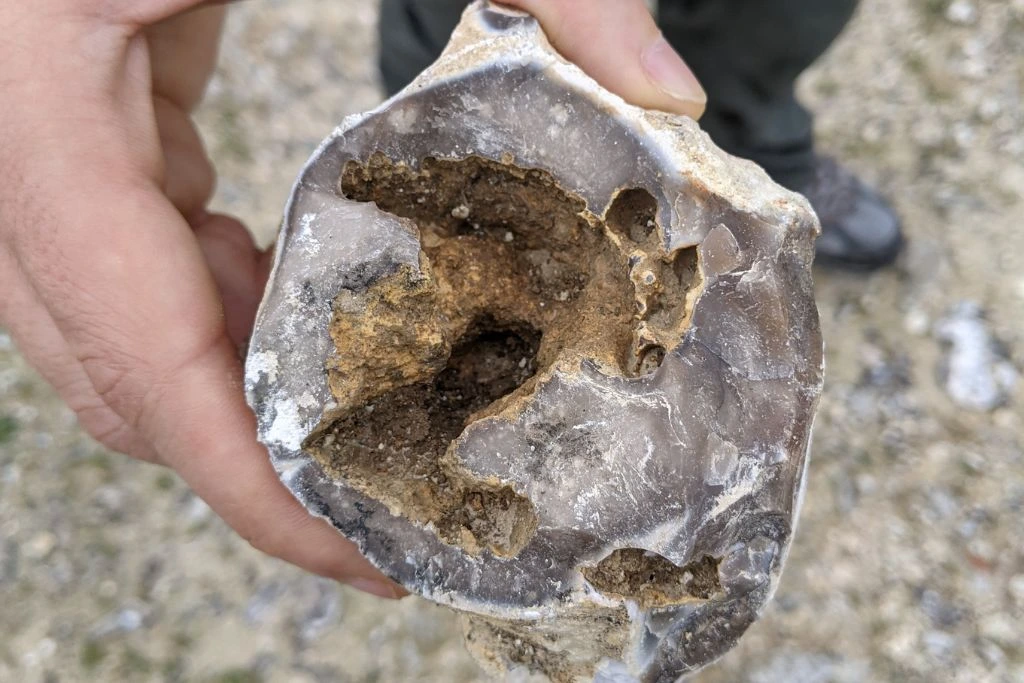
The best places to find Geodes are deserts, ash beds, riverbeds, and limestone regions.
We talked about Geodes forming from air pockets in rocks. But do you know when this happens? There are two main types of Geodes:
- Volcanic: Air pockets develop when lava cools down after volcanic eruptions
- Sedimentary: Dirt sediments around decaying remains of animal bodies deep under the soil with air pockets.
Into these air pockets, groundwater seeps in with all sorts of minerals. These minerals grow undisturbed for millions of years into crystals based on their molecular structure and become geodes.
While finding a Geode in your backyard is incredible, you won’t find it unless you’re in Iowa, Nevada, California, Utah, or Arizona.
Apart from the U.S., Geodes naturally occur in Kuwait, Saudi Arabia, UAE, Brazil, Iraq, Madagascar, Iran, Oman, Mexico, U.K, India, Spain, Namibia, China, Uruguay, and Australia.
So, how to find geodes at the beach? You can find basalt nodule geodes along rock formations on the beach. You can find them in loose gravel or cut them loose from the formation (carefully) with rockhounding tools.
Here’s a bonus tip for finding Geodes: Check with your local sites to see if there are any rockhounding clubs or geode-hunting events around you. Most Geode hunting hotspots have websites with the necessary information.
How To Identify Unopened Geodes? 5 Easy Tests
Thanks to humanity’s love for rockhounding, you can determine if a rock is a geode without cutting it open.
I’ll teach you how to tell if a rock is a geode with physical traits like color, shape, weight, texture, and origin.
1. Geode Weight Test
The easiest way that rockhounds know how to spot a geode in nature is by comparing its weight. Geodes have hollow centers. Hence, they would feel lighter in weight than the rocks around them.
- Hold your geode in your right palm.
- Pick another stone of identical size or shape from the same area in your left palm.
- Compare the weight of both stones.
Rockhound’s tip: You’ll find geodes in varying sizes, from peas to walnuts, basketballs, and even half a bedroom!
2. Geode Sound Test
Geodes are hollow inside, so it’s easy to test if your stone is hollow by listening to it.
To determine if you have a real one, do the following sound test before breaking the geode:
- Pick up your geode.
- Hold it near your ear.
- Shake the geode from front to back.
If you hear crystals rattling inside the rock, it’s a geode. The broken crystals in the hollow cavity are where the sound originates from.
Rockhound’s tip: Shake ‘n’ Check is a way to ensure your rock is hollow inside.
3. Geode Shape Test
Do you know how to tell if a rock is a geode just by looking at it? Shapes like spheroidal, oblong, egg-like, oval, and well-rounded are the telltale shapes of geodes.
Rockhound’s tip: While rare, geodes also exist in a triangle, cylinder, heart, teardrop, and square shapes because every geode is unique.
4. Geode Texture Test
Apart from the oblong shape, the bumpy texture on the exterior increases its chance of being a geode. Simply put, unopened geode rocks don’t have any sharp, angular, or blunt edges.
Rockhound’s tip: Don’t mistake rocks with a smooth texture for geodes because geodes have a cauliflower-like texture.
5. Geode Origin Test
Geodes don’t just pop up anywhere, so you’ll find them in regions already recognized for Geode hunting. They don’t exist in regions unmarked by geologists for geodes.
A cheat sheet of locations with Geodes in the U.S.A:
- California: The Hauser Geode Beds.
- Wisconsin: Lake Superior.
- Iowa, Illinois, and Missouri: The Keokuk Geode Beds.
- Utah: The Dugway Geode Beds.
- Indiana: Hoosier National Forest and The Bedford Limestone Deposit.
- Arizona: Sugarloaf Mountains and Payson.
- Ohio: Findlay Arch Mining District and Serpent Mound Zinc Deposit.
- Colorado: Felch Creek, Whitewater, and Wolf Creek Pass.
- Kentucky: Bluegrass Region and Warsaw.
- Texas: Edwards Plateau.
Rockhound’s tip: Places with basalt rocks, limestone beds, ash beds (near volcanic eruptions), and riverbeds are popular spots to find Geodes.
How To Open a Geode? 6 Tried and Tested Ways!
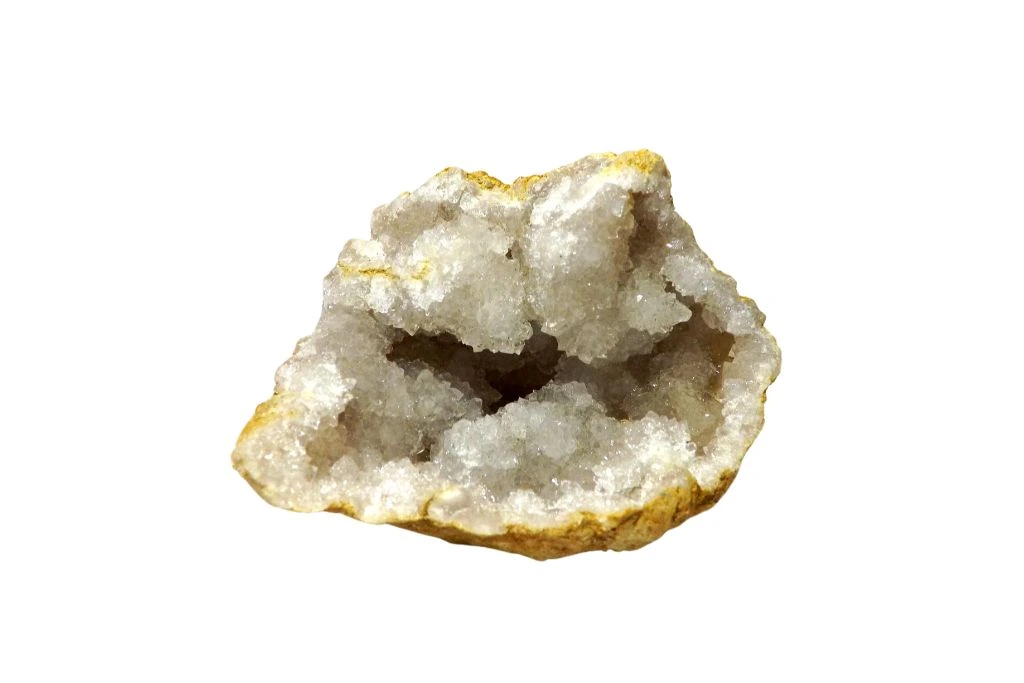
My bestie gave me a National Geographic Kit with 15 unopened geodes, including gear to open on my own. After opening dozens of geodes, I’ve learned a lot of things to do and NOT do.
I’ll tell you all my mistakes and give tips on how to open a geode safely.
Before getting started, here are a few things to get:
- Sock
- Safety Goggles
- Chisel
- Hammer
I’ll explain seven techniques for opening Geodes so you can pick one that works best for your lifestyle.
1. Hammer Only Geode Opening Technique
Disclaimer: This is the worst method for opening a geode because this may damage the geode or the crystals inside it.
In this method, you use a sledgehammer and tap on different sides of the geode to crack it open. This method is good if you’re too excited or don’t care much about getting an aesthetically-cut Geode.
Expert’s Tip: It’s best to put the geode rock in a sock or two before hammering it if you don’t want splinters or to deal with a mess afterward.
2. Chisel and Hammer Technique to Open Geodes
This is one of the best methods for opening a geode without damaging it.
How to cut geodes properly:
- Place your geode on a flat surface.
- Take your chisel and place it on the top middle region.
- Tap the chisel lightly with the hammer to make indentations marking the circumference of the rock.
- Steadily yet gently tap circularly around the rock until you hear or see a crack.
- Finally, use your chisel and hammer to widen the crack with gentle taps.
Expert’s Tip: Follow the crack instead of making new cracks to minimize the damage.
3. Rock Smashing Technique for Breaking Open Geodes
Another amateur technique to open a geode right where you found it is using a heavier rock.
Note: This isn’t a good way to open geodes unless you can control the pressure like a machine. Moreover, this technique often smashes geodes into splinters and broken stones rather than into aesthetic pieces.
How to use a heavier rock to open a geode:
- Find a rock bigger and heavier than your geode.
- Put your geode in a sock.
- Place the geode in the sock on a flat or soft surface.
- Pick the heavy rock and smash it (without being too hard) on your geode.
Expert’s Tip: If you don’t have alternatives, pick up a stone a little heavier or bigger than the geode rock instead of huge stones.
4. Opening Geodes With a Pipe Cutter
Disclaimer: You shouldn’t use sharp, heavy, or power machinery without necessary training and safety gear. The following is only for educational purposes.
Cast iron pipe snap cutters are the best for getting the cleanest cuts without any waste. They make clean cuts along the axis of the crystal using pressure without any damage.
Expert’s Tip: The cast iron pipe snap cutter is a popular plumbing tool to split a geode symmetrically.
5. Diamond Blade for Opening Geodes
An advanced technique for cutting open geodes is with a lapidary diamond blade. You can slice the Geode into two parts using this. However, this method isn’t for amateurs.
Expert’s Tip: Diamond blades are called Lapidary saws and get a clean and polished cut without damaging the insides of Geode rocks.
6. Geode Cracker for Opening Geodes Perfectly
Also called the Geode Slicer, this is one of the professional tools for opening geodes. It’s a large contraption exclusively made for opening geodes.
Expert’s Tip: If you have a Geode Cracker or Slicer, you’re also a professional Geode Cracker/ Slicer.
7. Professional Geode Opening Places
If it seems impossible to cut your geode or you don’t want it to splinter, it’s best to go to a professional lapidary shop and get it cut.
Expert’s Tip: Ask the professional to open the geode in your presence to avoid mishaps.
Tips for Opening Geodes
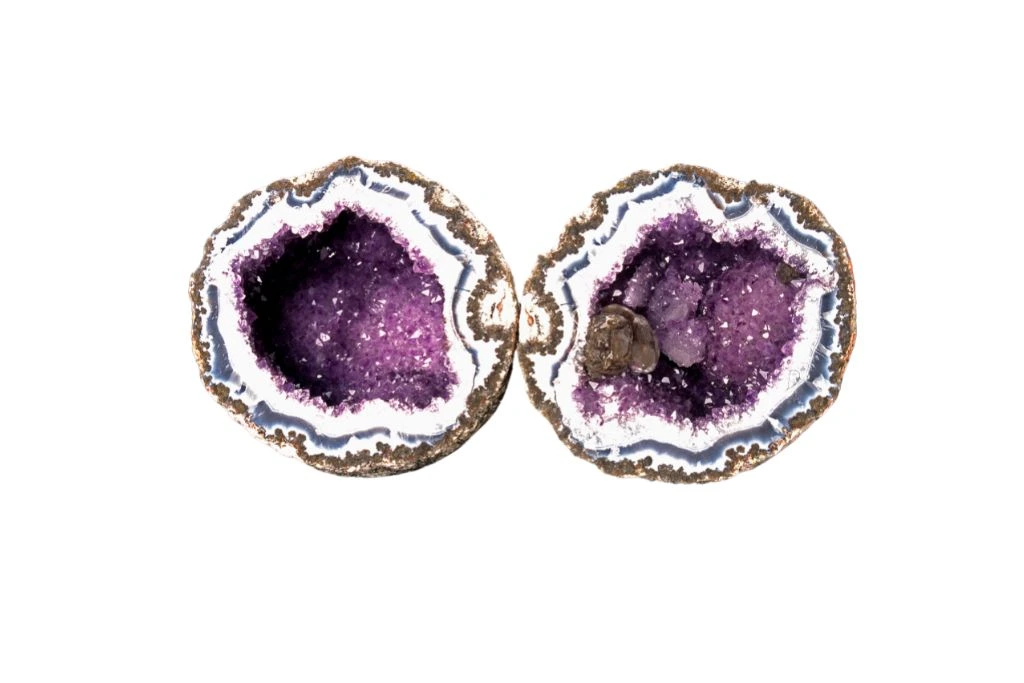
Geodes may contain several minerals, fossils, and toxic dust inside them. Apart from taking precautions when cutting or hammering them, you must clean them professionally before use.
- Wear a mask to avoid inhaling toxic dust when opening geodes.
- Clean your geode by soaking it in synthetic vinegar for 8 to 10 hours.
- Experts also say soaking geodes in washing ammonia for 8 to 10 hours to detox it before use.
- Another way of cleaning geodes is soaking them in 25% strength household bleach for up to 48 hours. This is excellent for removing organic material or bacteria from the geode.
- You can clean geodes using a soft-bristle brush and laundry detergents before use.
- Before soaking the geode in strong solutions, it’s good to soak it in distilled water for a day to melt the grit and grime.
- Use a toothpick or Q-tip to clean the insides of tiny geodes instead of tapping or using your hands.
- Avoid oiling your cutters before opening a geode because oil may damage the interiors of some geodes.
Metaphysical Properties and Benefits of Geodes
We learned every way to identify geodes of all shapes and sizes. What’s the meaning of a geode? Do you know how to use a Geode? What do people do with geodes?
Some call geodes Nature’s Womb, and others the rebirth, renewal, strength, or nourishment stone. Spiritually, geodes are good for cleansing auras, chakras, rooms, gardens, objects, and other crystals.
Because geodes also amplify the energy of other crystals, you can use them in crystal grids, for feng shui, while setting intentions, before Reiki healing, or for chakra balance.
FAQ on Identifying Crystal Geodes
- How do you know if there’s a geode in the rock?
It’s easy to determine if you have a geode by checking its external traits like shape, size, weight, texture, sound, and origin.
- What does the outside of geodes look like?
The exterior of geodes is oval or oblong-shaped with a bumpy texture.
- How do you find a geode?
The best places to find geodes easily are near basalt rocks, limestone areas, ash beds, and riverbeds.
- Where are geodes commonly found?
Geodes are commonly found in the U.S.A., India, Madagascar, Australia, Namibia, Mexico, Uruguay, Spain, China, UAE, Iraq, and Iran.
- What is the rarest geode color?
The rarest color of the geode is a mix of purple (Amethyst) and black (Black Calcite).
- What is the most common geode color?
White and brown are the commonest colors of geodes.
- How much is a geode worth? What kind of geodes is worth money?
Usually, geodes sell from $5 to $1,000. Unopened geodes fetch higher prices if they contain crystals inside them. They’re then professionally cut along the axis to collect and cut the inner crystals.
- What is a fake geode? How to identify a real geode from a fake?
Man-made geodes are called fake geodes. Some enhanced crystals like Angel Aura Quartz geodes come from a base of Clear Quartz geode. Finally, they are dyed metallic with nickel, platinum, gold, or niobium to create rainbow iridescence.
- What do people do with Geodes?
People circle geodes over their chakras, auras, space, objects, and crystals to eliminate negative energies stuck to them. Geodes are also good for amplifying the energy of intentions, objects, crystals, and chakras.
- How long does it take for a Geode to form?
While small geodes may take hundreds of thousands of years, large geodes usually take millions of years to form.
As we learned in the beginning, geodes are formed from the cooling volcano over air pockets. After the water seeps into the cavity and evaporates, the rock closes up. Finally, the minerals brought by water will layer the insides based on their traits for thousands or millions of years until it opens.
Start Identifying Geodes Easily!
We learned what geodes are, their features, characteristics, and uses in detail.
I believe geodes are nature’s treasures.
If you love geode hunting or opening, the above tests and opening techniques will help you get to a pro level.
Before you go, here’s a Geode identification chart to help you determine real ones easily:
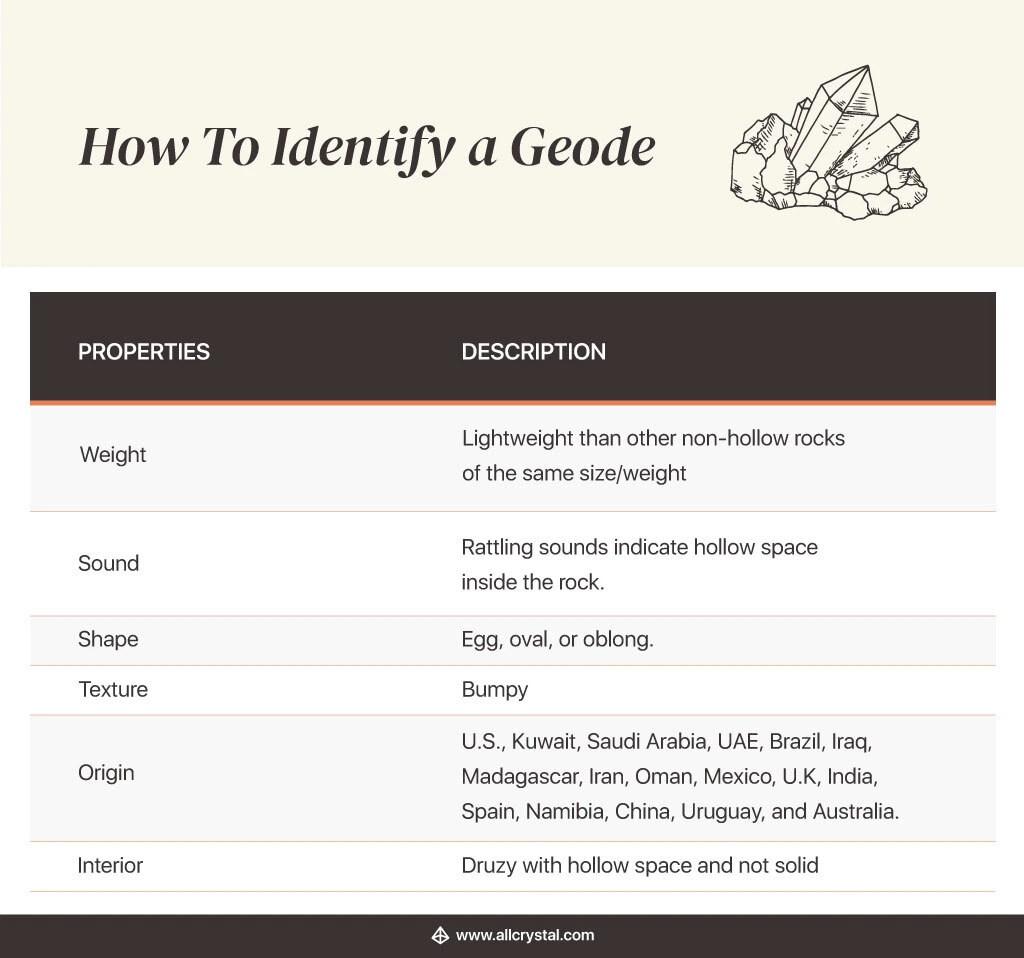
Do you like Geodes? Have you ever opened one? What’s your favorite way to open them? Share it with our community at AllCrystal!


